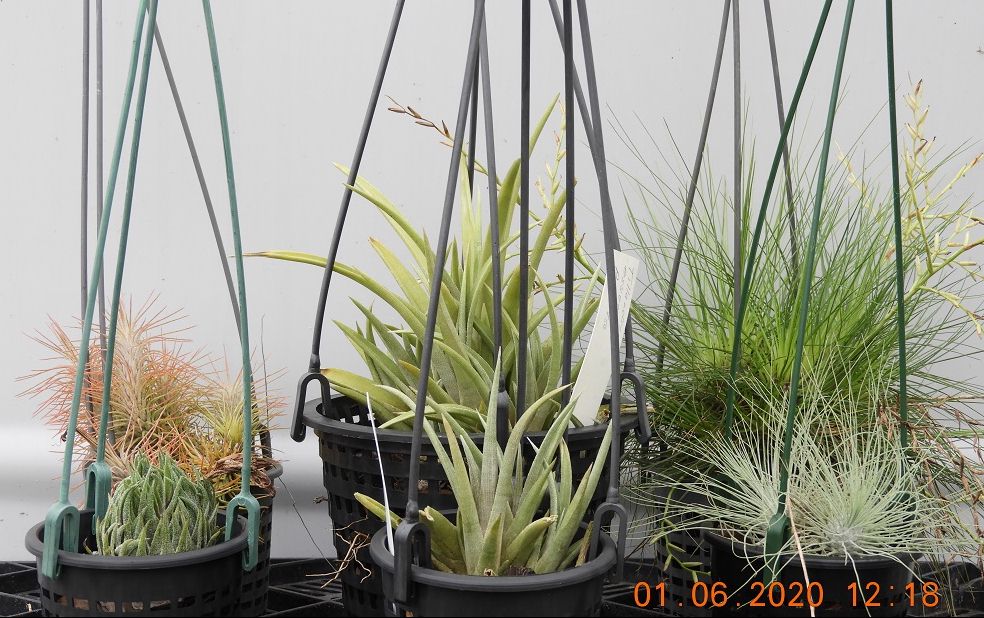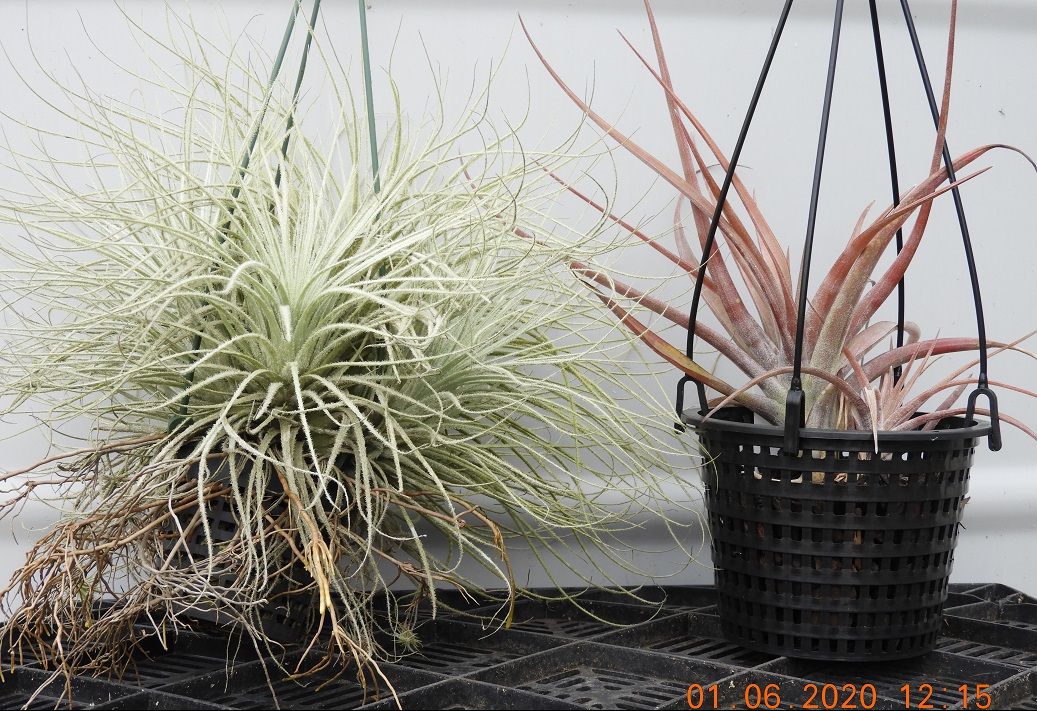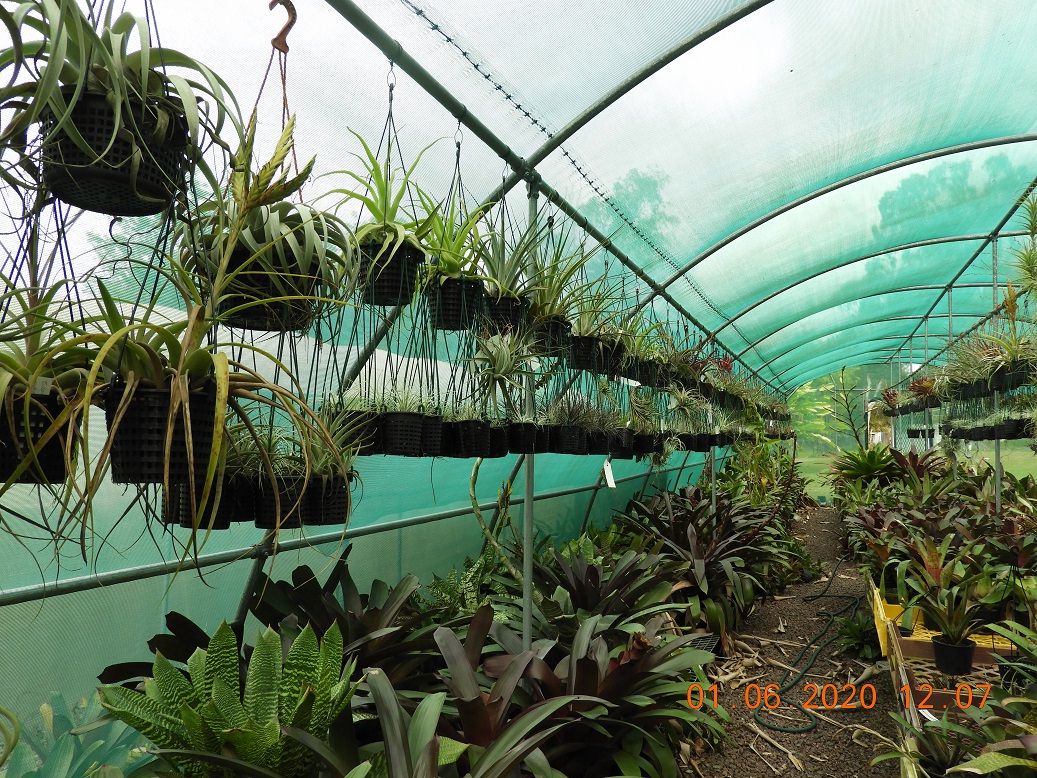



Tom Isaac, Qld ... "I have used a polystyrene box with water in it and cut holes out at the top to sit the plants in. Just make sure the base of the plant does not get wet. This will give the root system a humid environment and it works well.
I know of a few others that use this method also and I think it was Bruce Dunstan that I got the idea from."
Lloyd Godman, Vic. ... "It could be worth using KEIKIROOT. It is a formula containing auxins and vitamins and is designed to promote rooting on Phalaenopsis keikis (plantlets) and on forced back bulbs of orchids, such as Cymbidiums, Lycastes, Oncidiums etc.
When using KEIKIROOT follow normal sanitary precautions and keep KEIKIROOT away from eyes, skin, children and pets. Store at room temperature (about 20 degrees C) and use within one year of purchase.
https://floralaboratories.com.au/keikigrow-plant-hormones/"
Bob Reilly, Qld ... "In my experience:
- Some species e.g. the T. fasiculata complex, like pot culture much more than other ones e.g. T. stricta. The green-leaved species nearly all seem to prefer pot culture. (It would be very interesting to know other Nutters’ experiences as to which species like (or dislike) pot culture).
- It is important that the plant is held firmly in the potting mix, otherwise root growth will be slow or non-existent. If it is proving difficult to stabilise the plant, then stake it—I find thin strips of bamboo work well.
- The potting mix needs to be freely draining (I often use a mixture of orchid bark and charcoal)
- While open mesh pots help with drainage, once the roots go through the mesh, then they will die. So, “conventional” pots can be better.
- Regular foliar fertilising helps the plant to obtain the maximum benefit from pot culture."
Nick Rourke, NSW ... "I have been experimenting with Yates clonex, both the red and purple gels. I've used both with pot culture and mounted plants.
The offsets I've used it on against the plants that didn't receive the gel is substantial. I'm getting very good root growth in a short span of time and to no I'll affect on plants.
I'm using The 4 prong pot hangers to keep the plants stable in the pot so they don't get disturbed.
I have also been toying with potting media and I have many plants growing in 7-12mm size diatomite which has been a great media but discontinued by the chalk mine and impossible to find.
As a substitute I have been using the 3-5mm diatomite mixed 50/50 with coarse perlite and I'm getting good results.
Also horticultural charcoal neat and/or mixed with the perlite, orchid bark and diatomite.
I'm using the mix of all four with orchids and for what it's worth they are loving it.
Pleanty of slow release Fertilliser! I'm using Osmocote exact Lo-start, 16-18 month, 15 - 3.5 - 9.1 + Te at 1.5 × reccomended dosage with great results I haven't lost a plant grown by pot culture yet fingers crossed and the plants in pots in my shadehouse are looking better than ever.
I hope some of this helps ... What works for one person might not for another so I'm sure you will have fun experimenting."
Greg Jones, Qld ... "Most of my Tillandsias are grown in pots and I have a lot more than 1000 in Port mesh pots potted in coarse bark.
Pretty much everything I have put in these pots has thrived. There are a few caulescent Tillandsias I have not tried but I will get around to doing them in the future. I dont worry about the roots growing out of the pots, they dont die and remember Tillandsia roots are mainly for anchoring the plant.
A lot of plants I just sit on the bark in the pot and they put down roots, though sometimes these roots only attach to the bark on the surface so the plant is not anchored well, but this is an advantage when I want to break them up.
As for using a root stimulator I don't know why anyone would bother as all my Tillandsias are happy to grow roots as long as the base is not badly damaged.
Most people grow fasciculata types in pots but here are a few different types I grow in pots.
The two middle plants in first picture are the green form of esseriana ex. Bob Hudson which has thrived in a pot and I have divided it many times. The red form I have only recently potted but I can see no reason it will not grow well."
Pictures by Greg Jones, June 2020



